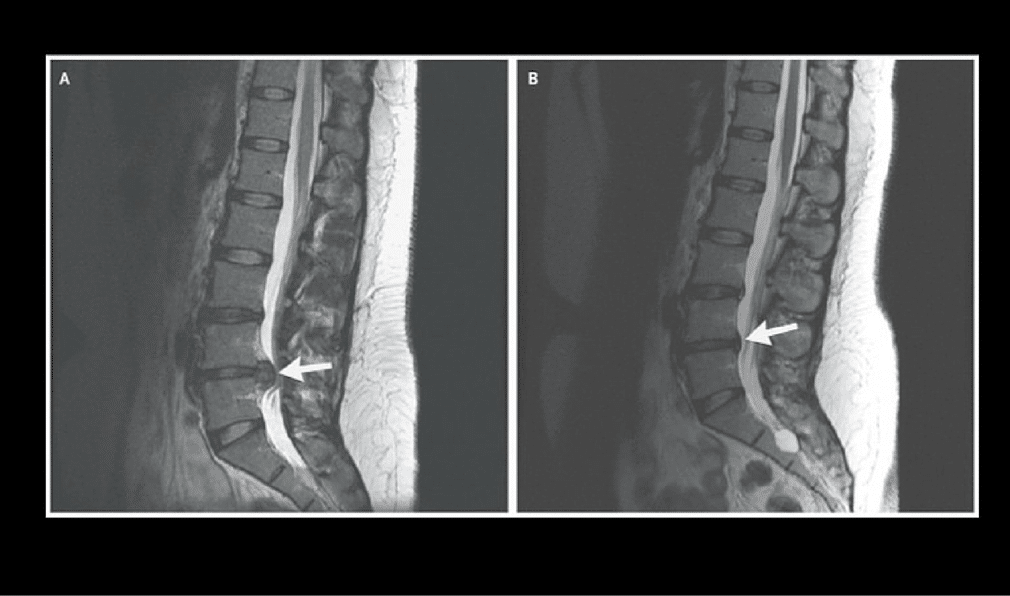Every day we see patients with disc bulges or lumbar disc herniation like the patient below who were told to have steroid injections, physical therapy but eventually, they are pointed to surgery. This landmark study in the New England Journal of Medicine proves many discs improve on their own without surgery. What motivates doctors and PAs to not share this type of information with patients allowing truly informed consent? As you can see below, her herniation healed on its own without surgery, likely through time. A true indication for surgery is incontinence and/ or rapidly progressing paralysis of the extremities over a short time. If you have been told you need surgery for a disc herniation, let this study encourage you that time may on your side.
THE FOLLOWING IS FROM A STUDY FOUND IN THE APRIL 14, 2016 ISSUE OF THE NEW ENGLAND JOURNAL OF MEDICINE.
A 29-year-old woman presented to the spine clinic with new-onset pain in her right leg, accompanied by paresthesia. There were no bowel or bladder symptoms. Magnetic resonance imaging (MRI) of the lumbar spine revealed a lumbar disc herniation resulting in substantial spinal stenosis and nerve root compression (Panel A, arrow). She elected conservative treatment with physical therapy and epidural injection of glucocorticoids. A second MRI obtained at follow-up 5 months after presentation showed resolution of the herniation (Panel B, arrow).
Lumbar disc herniation has an uncertain natural history. Data from clinical trials suggest that patients who have herniated lumbar disks have similar long-term outcomes whether they undergo surgery or elect conservative management. In addition, the risk of subsequent catastrophic worsening without surgery is minimal. This patient reported that she began to have back pain after playing volleyball several years before presentation, whereas the pain and paresthesia in her leg began 6 months earlier and were not associated with a precipitating event. Her clinical symptoms resolved, and she was discharged from the clinic, with follow-up recommended as needed.


